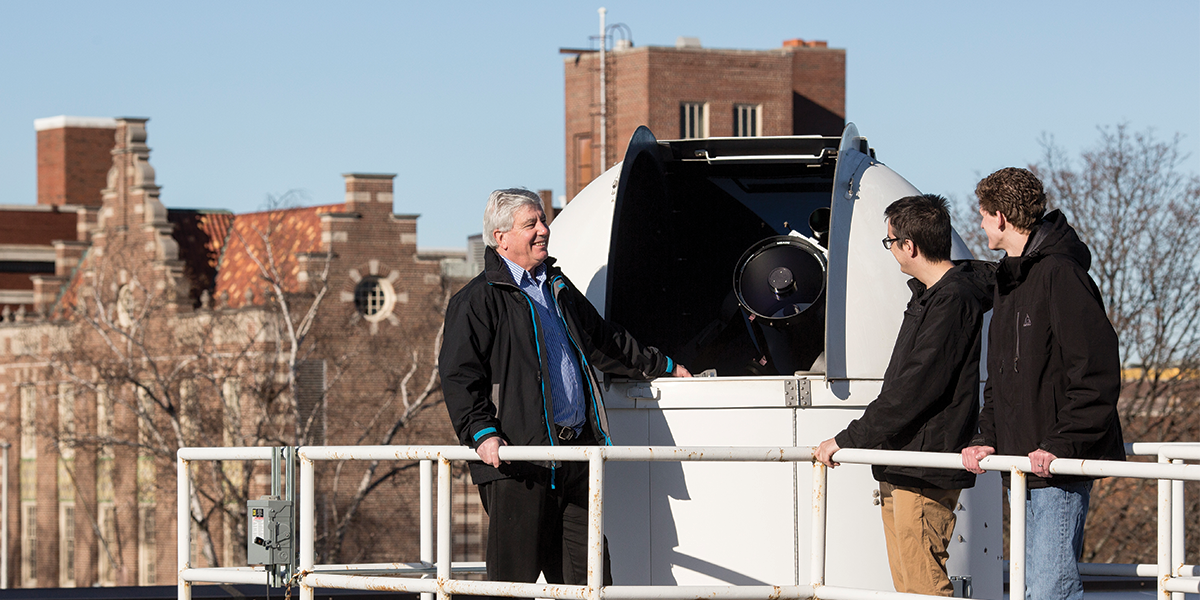At the Galaxy’s Center, a Mystery
Peter Gonthier, Ph.D. | Professor of Physics
At the center of our Milky Way Galaxy, something’s going on that puzzles astrophysicists. Decades of intense research built expectations about the gamma rays that ought to emanate from that zone. Yet NASA’s Fermi Gamma-Ray Space Telescope picks up levels that exceed expectations.
Why?
Here’s Dr. Peter Gonthier’s take: Perhaps there’s a population of millisecond pulsars at the Galactic Center that technology can’t yet detect. In 2017 he and long-time research colleague Dr. Alice Harding of NASA made this case in a paper co-authored with Dr. Yew Meng Koh, assistant professor of mathematics at Hope, and several students from other institutions. They’ve submitted the article to a peer-reviewed journal.
Pulsars are dense, rapidly rotating stars that appear to pulse as they come into view. Millisecond pulsars rotate extraordinarily fast, as many as 700 times per second.
Some other astrophysicists think that the gamma-ray excess points to dark matter annihilation — the ongoing decay of matter that astronomers haven’t observed directly but are increasingly confident exists.
Gonthier doesn’t think that all research should pivot in that direction. “Rather than saying it’s a source we know nothing about — dark matter — we are saying, ‘Let’s go after sources that we know.’ We know what millisecond pulsars look like and what they contribute. The simulated spectrum that we provide in this paper is exactly the spectrum of the Galactic Center gamma-ray excess.”
He and his colleagues generated that simulated spectrum using a model, the bread and butter of Gonthier’s research on neutron stars, pulsars, and radio x-ray and gamma-ray astrophysics. At his computer in VanderWerf Hall crunching NASA data, and in his annual month-long summer foray with several Hope College students to the agency’s Goddard Space Flight Center in Maryland, he builds computer models to assess phenomena that scientists can’t measure in a literal sense — that is, in the laboratory.
Pure research of this type isn’t focused on a hoped-for practical application. At times, though, it leads to one. Gonthier offers this example: Implications of Einstein’s theory of relativity are key to the conceptual design that enables cell phones to keep time precise even though they are communicating with satellites whose clocks are “moving” relative to ours as they orbit the Earth. The technology of magnetic resonance imaging devices, x-ray machines and a great deal of other modern medical technology also grew out of concepts and discoveries of pure research.
During the school year, Gonthier conducts research along with Hope students, including (pictured above) Calvin Gentry ’18, whose summer work has been supported by the Charles Bibart Summer Research Fund, and Josiah Brouwer ’18. Some of Gonthier’s students go on to careers in astrophysics and related scientific fields. “We’re basically treating them as graduate students. That’s what prepares them and what allows them to be so successful in graduate school,” he says.

